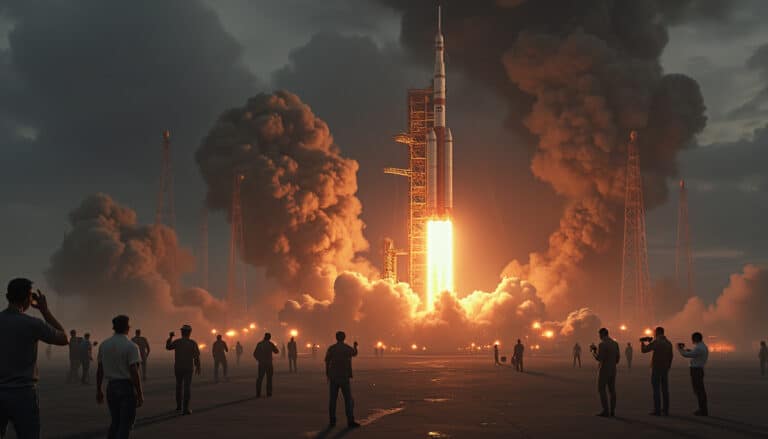The scene is extraordinary: a reusable spacecraft has just concluded a mission which lasted no less than 268 days in the immensity of Earth’s orbit. This long-awaited return marks a significant step in space exploration, highlighting the advancement of technologies Chinese in aerospace matters. The machine was launched from Jiuquan Launch Center, symbol of China’s know-how, and its landing is part of a mysterious and innovative approach, the details of which remain kept secret. A success which will not fail to fuel discussions on the future of space missions and the importance of recyclability in this rapidly evolving field.

Recently, China achieved a remarkable feat in the field of space exploration with the return of a reusable spacecraft after a long mission of 268 days. Launched from the Jiuquan Satellite Launch Center, the craft demonstrated the advanced capabilities of China’s space technology and paves the way for bold future missions.
Table des matières
ToggleA strategic launch
The spacecraft was launched on December 14, 2023 aboard a launch vehicle Long March 2F. This type of launcher is renowned for its reliability and performance, and its use during this flight demonstrates the strategic importance of this mission. The launch site, located in the northwest China, is a critical location for the country’s space operations.
An ambitious mission
During these 268 days in orbit, the spacecraft fulfilled various scientific and technological objectives. According to experts, this mission could focus on secret experiments, strengthening China’s knowledge in the field of navigation and space experimentation. The character mysterious This mission arouses interest because few details are shared with the public.
Reuse technology
This spaceship is a clear commitment towards innovation and sustainability in space exploration. By using a reusable spacecraft, China demonstrates its intention to reduce the costs associated with space missions while increasing the frequency of launches. This concept of reuse, already adopted by other space powers, could well revolutionize the future of interstellar travel.
Successful landing in the Gobi Desert
After a nearly nine-month mission, the spacecraft successfully landed in the Gobi desert. This isolated region was chosen for its vast area, allowing for a safe landing. The event was hailed by Chinese officials as a giant step toward more ambitious goals in space exploration.
Implications for the future of space technology
This success not only marks a breakthrough for China’s space program, but also opens up new prospects for long-term research and development. The information collected during this mission could enrich knowledge on the conditions in orbit, as well as the technologies necessary for future missions, including those to the Moon or Mars.
Après un vol test, le vaisseau spatial Starship de SpaceX réussit pour la première fois à amerrirhttps://t.co/anyfGr4NPe pic.twitter.com/ETvnurZiO8
— BFM Business (@bfmbusiness) June 6, 2024

























